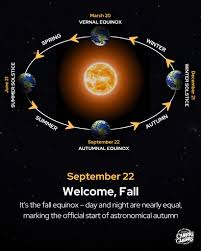All About the Fall Equinox: Significance and Traditions

Introduction
The fall equinox, occurring around September 22nd or 23rd each year, marks a pivotal point in the astronomical calendar. This event signifies the transition from summer to autumn in the Northern Hemisphere and holds both scientific and cultural importance. As day and night reach equal length, the fall equinox is a time for reflection, harvest celebration, and the onset of cooler weather.
What is the Fall Equinox?
The term “equinox” derives from the Latin words for “equal” (aequus) and “night” (nox), indicating the balance of daylight and darkness. During the fall equinox, the sun crosses the celestial equator, moving southward. This results in nearly equal hours of day and night across the globe, compelling many societies to embrace this time as a marker of balance in nature.
Significance in Agriculture and Culture
Historically, the fall equinox has played a crucial role in agricultural societies. Many cultures celebrate harvest festivals during this period, giving thanks for the fruits of the earth before winter approaches. For instance, in North America, Indigenous communities have long held rituals and gatherings to honor the harvest, emphasizing gratitude and sustainable practices.
In various cultures around the world, the equinox is celebrated with specific traditions. For example, in Japan, the “Higan” week takes place around the equinox, where families honor deceased relatives. In some parts of South America, festivals celebrate the bounty of crops, aligning agricultural practices with the rhythms of nature.
Scientific Observations
From a scientific perspective, the fall equinox serves as an opportunity for studies in astronomy, ecology, and climate. Observers note changes in animal behaviors, plant cycles, and weather patterns, indicating the seasonal shift. Schools and educators often use this event to teach students about Earth’s axial tilt and its relation to the seasons, making it an engaging learning experience.
Conclusion
The fall equinox is more than just a change of seasons; it’s a moment of equilibrium, cultural significance, and scientific interest. As communities around the world prepare to gather for harvest celebrations and reflect on the balance of light and dark, this equinox remains an important reminder of our connection to nature’s cycles. In the coming years, as environmental issues rise, awareness of such natural events may increase, prompting communities to engage in more sustainable practices and foster a deeper appreciation for the changing seasons.









